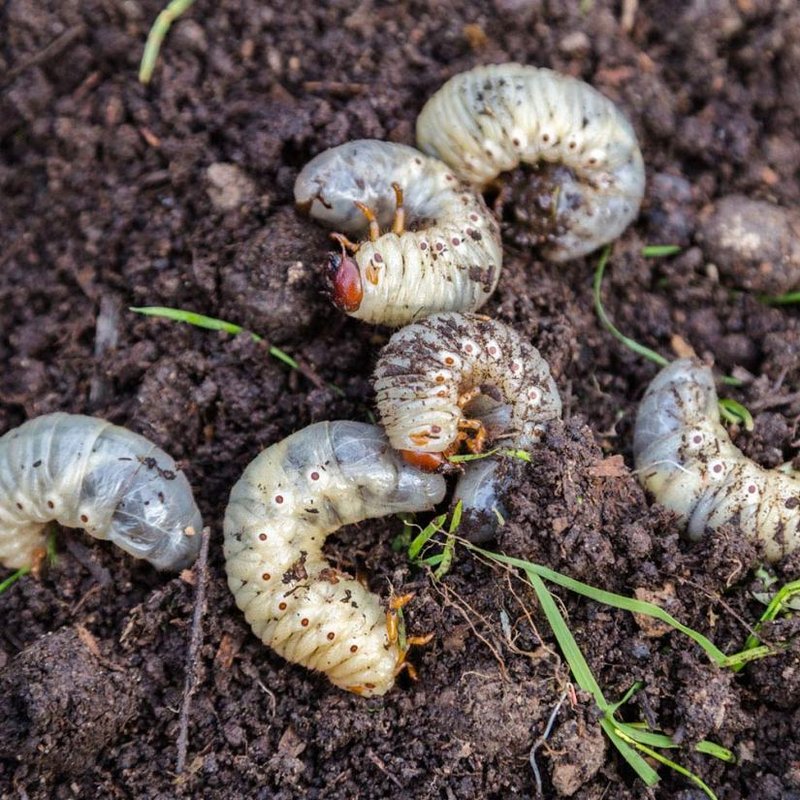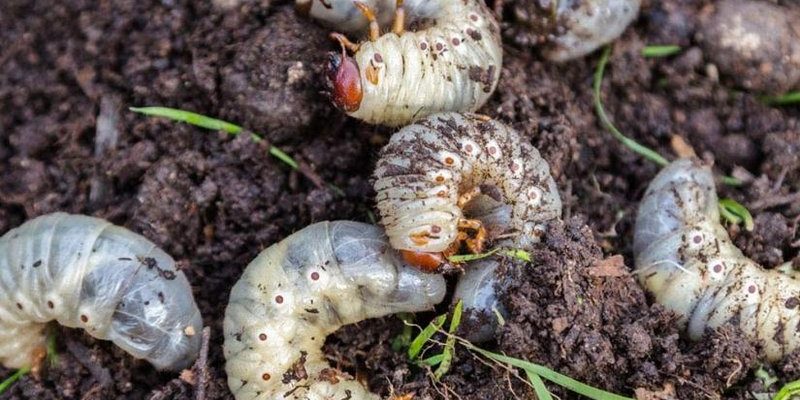
When drought conditions hit, these little critters can become a real problem for your garden or lawn. Think of them like a houseguest who overstays their welcome. During a drought, their food sources become scarce, and they might come out looking for greener pastures—or, in this case, greener gardens. This shift in behavior is part of a larger survival strategy that can have significant effects on our lawns. So, what exactly happens to grub worm activity during these dry spells? Let’s dig deeper.
What Are Grub Worms?
Before we dive into their drought behavior, let’s clarify what we mean by grub worms. Grub worms are the larval stage of various beetles, primarily the Japanese beetle and the June beetle. These larvae usually live underground, munching on grass roots and organic matter. Think of them as nature’s little recyclers, but they can also be quite destructive!
Under normal conditions, these worms thrive in moist soil. They help break down organic material, aiding in soil health. However, too many grubs can lead to significant lawn damage—especially when they feast on those delicate roots. To put it simply, when it comes to lawns, grub worms can either play the role of a helpful ally or a troublesome foe, depending on their numbers.
Grub Worms and Drought: A Survival Strategy
Here’s the thing: when drought hits, grub worms face a real challenge. The soil dries up, which can make it harder for them to find food and moisture. So, they adapt. Typically, they move deeper into the ground, seeking cooler, moister areas. This is pretty smart on their part!
You might wonder how this affects your lawn. With grub worms moving down, they can escape the heat, but they’re also less likely to feed on roots, which sounds good, right? Well, not entirely. As they dig deeper, they can leave behind a trail of damage as they munch away on the roots they find. So, while they’re hiding from the sun, the damage is still there, lurking beneath the surface.
Behavioral Changes in Drought
In dry conditions, grub worm behavior changes significantly. They become more active at night when it’s cooler and more humid. This nocturnal shift is their way of conserving moisture and avoiding the harsh daytime heat. You might notice that your yard looks greener in the evening; this could be partly because the grubs are out and about, sneaking a snack!
During droughts, you might also find more grubs coming to the surface. This increased surface activity can lead to visible damage on your lawn. You might spot patches of wilting grass, or even more severe brown spots, as grubs devour the roots.
Identifying Grub Damage
So, how can you tell if your lawn is suffering from grub damage? Look out for a few telltale signs:
- Wilting Grass: Grass that looks limp and brown, especially in patches, may indicate grub activity.
- Loose Turf: If sections of your lawn pull up easily, it could be because of root damage from grubs.
- Animal Activity: Increased digging or foraging by birds, raccoons, or other animals can mean they’re hunting for grubs.
Identifying these signs early can help you tackle the problem before it gets out of control. If you suspect grub worms, digging up a small section of grass to take a peek can give you a clearer picture.
Preventive Measures During Drought
When it comes to preventing grub worm activity in drought conditions, several strategies can help. Let me explain a few:
1. **Water Wisely:** While your lawn might be drying up, watering it appropriately can deter grubs. It’s not just about putting out the hose, though! Aim to water deeply but less frequently. This encourages the grass roots to grow deeper, making it harder for grubs to reach them.
2. **Soil Aeration:** Aerating your lawn improves airflow and water absorption. This can help your grass stay healthier and less appealing to grubs. Plus, it gives your lawn a fighting chance during dry spells.
3. **Natural Predators:** Encourage beneficial insects or wildlife that feed on grubs, like certain birds, to take up residence in your yard. Birdhouses or bird feeders might help attract them.
4. **Fertilization:** A well-fertilized lawn is more resilient. Using organic fertilizers can help your grass grow stronger and healthier, making it less attractive to grubs.
5. **Timing is Key:** Pay attention to when you apply preventative treatments. Applying these in late spring or early summer can help minimize grub populations before drought conditions set in.
Treatment Options for Infestations
If you find that your lawn is already suffering from a grub infestation, don’t fret! There are treatment options available. Some popular ones include:
1. **Natural Remedies:** If you’re looking for an eco-friendly approach, consider using nematodes, which are microscopic worms that target grubs without harming your lawn. Just be mindful to apply them when the soil is moist.
2. **Chemical Treatments:** There are various insecticides designed to combat grub worms, but they should be used as a last resort. Always follow the application instructions carefully to avoid harming beneficial insects.
3. **Timing Treatments:** If you’re using chemicals, timing is crucial. Apply them when grubs are young and just below the surface—typically in late summer or early fall.
4. **Regular Monitoring**: Keep tabs on your lawn’s health even after treatment. This will help you detect any future infestations early on.
Grub worm activity during drought conditions presents unique challenges for lawn care. While these pests can be problematic, understanding their behavior can help you take proactive measures to protect your yard. By staying informed about their patterns, you can use strategies to prevent infestations and maintain the health of your lawn.
Ultimately, keeping your lawn lush and healthy takes a bit of work, especially during dry spells. But with a little knowledge and the right actions, you can keep grub worms at bay and ensure your garden continues to thrive. So, roll up your sleeves, grab that watering can, and let’s keep those grubs from taking over!

